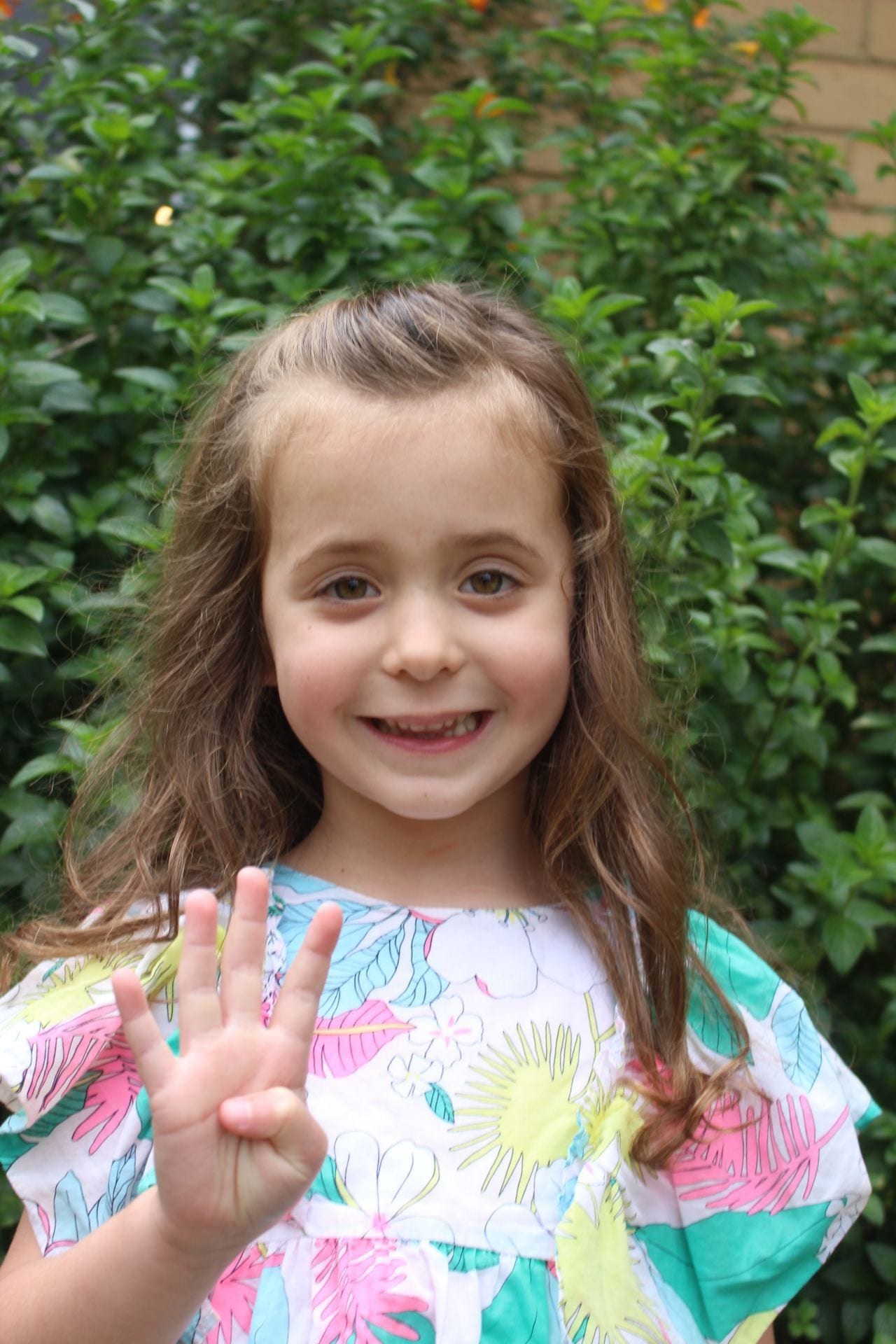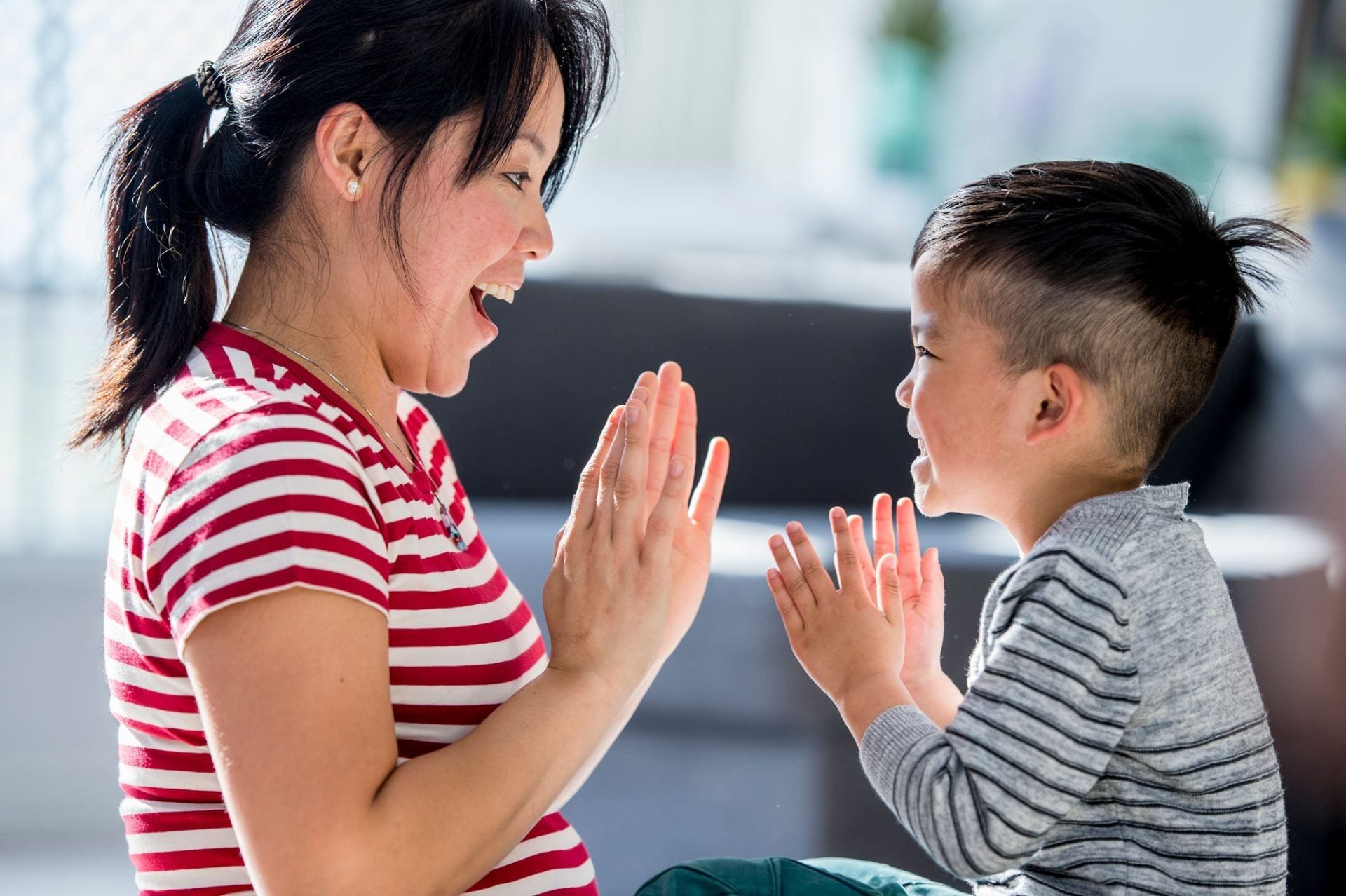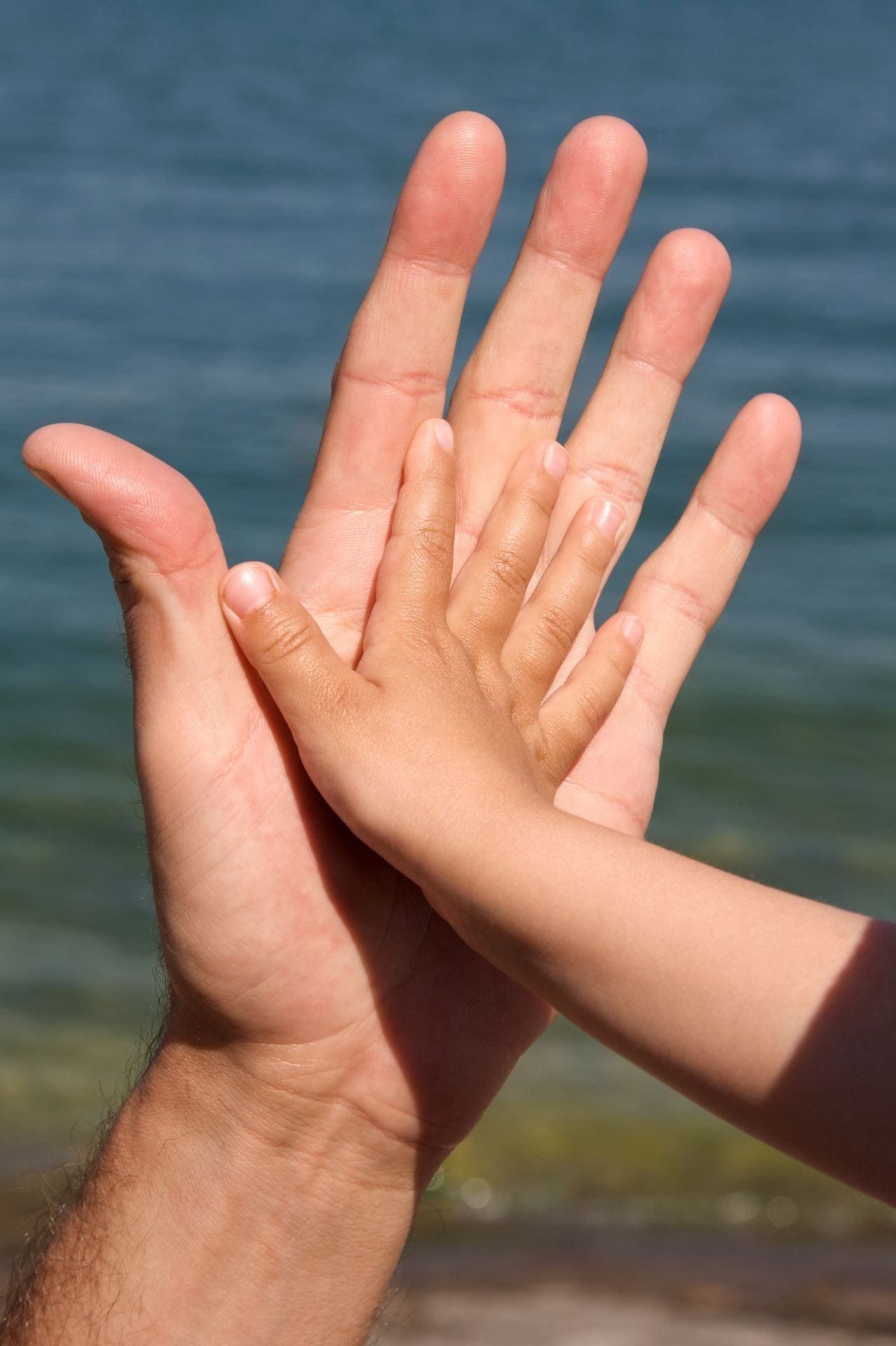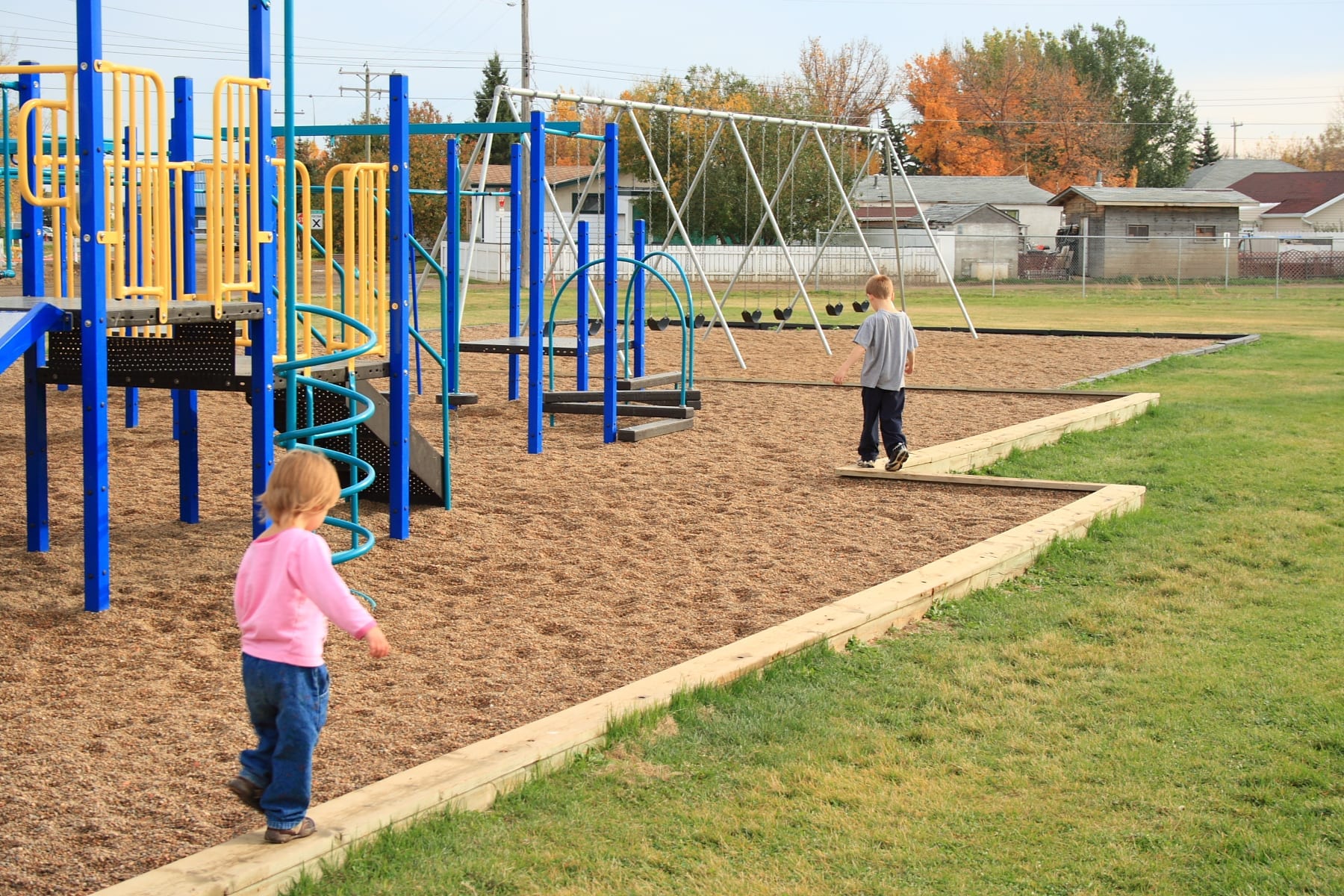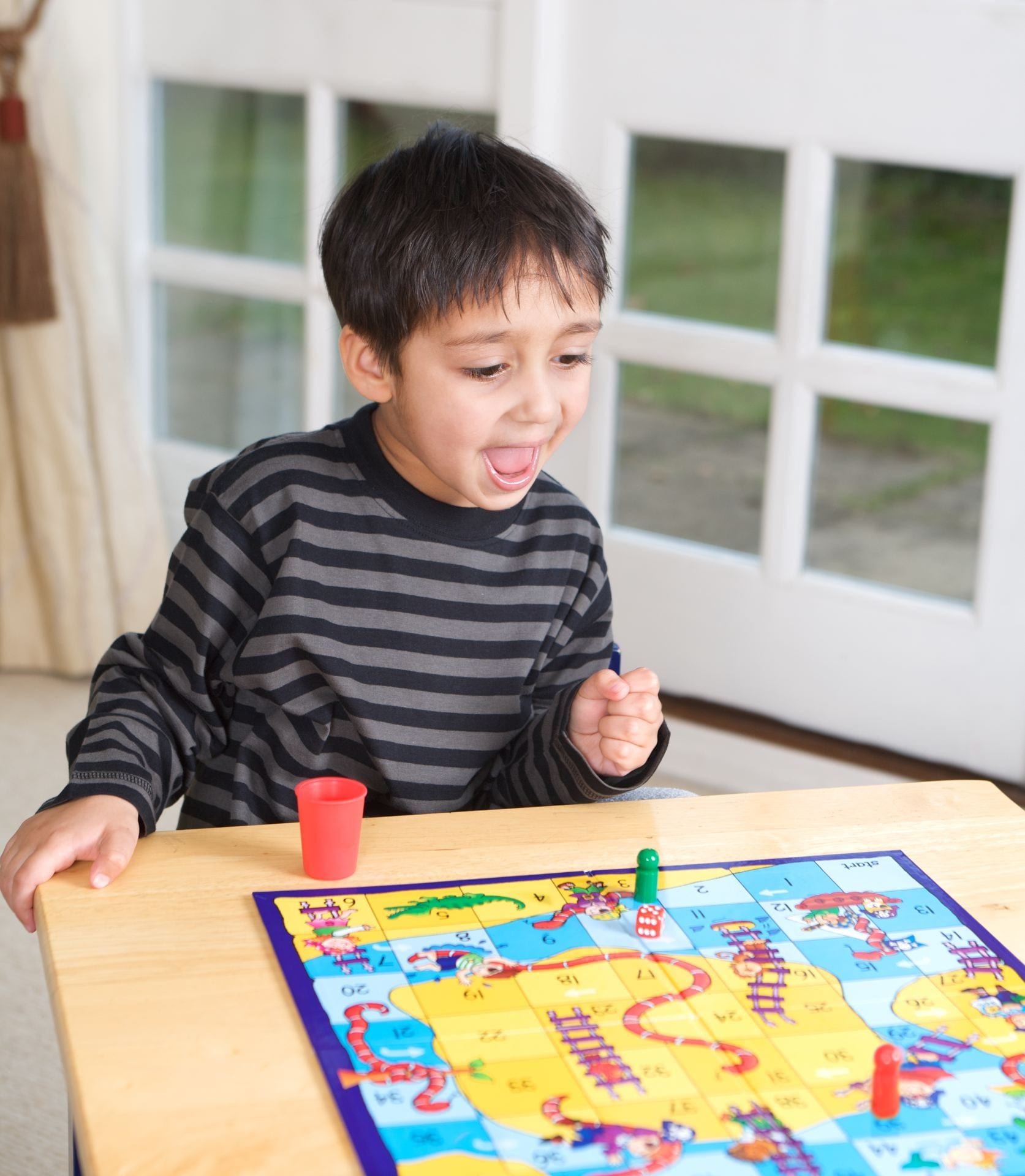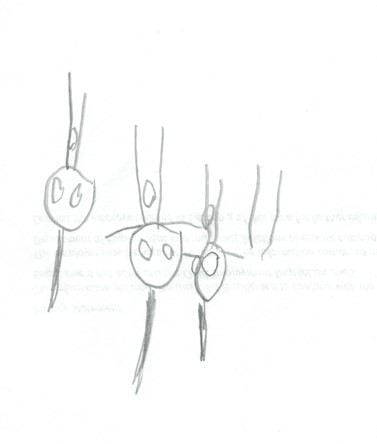Birth to Level 2
Explore the development of numeracy from Birth to Level 2
Home » Numeracy Focus Areas » Birth to Level 2
How does numeracy appear in this context?
What might you expect students to do?
Babies, toddlers, preschoolers, or young school children are connected with and contribute to their community: What should they understand and be able to do at various levels of development?
Take a look at the Victorian Early Years Learning and Development Framework (VEYLDF).
In particular, familiarise yourself with VEYLDF Learning Outcome 5: Children are effective communicators and VEYLDF Learning Outcome 4: Children are confident and involved learners.
What numeracy words and ideas can you support young children to become familiar with and start to use at various stages of early childhood development?
Developing number sense
Quantifying numbers, using additive and multiplicative strategies
Developing number sense includes quantifying numbers, estimating, using additive and multiplicative strategies, as well as:
- Sharing, ordering and estimating different quantities
- Quantity – develop concepts of more, less, most, least
- Counting, count on
- Trusting the count
Everyday contexts and examples involving developing number sense:
- Free and directed play with manipulatives (many different 2D shapes and 3D solids)
- Counting everyday objects and sets, including fingers and toes, family members, toys
- Singing songs and rhymes with a counting sequence to promote ordinal number in context, e.g. Five Little Ducks
- Problems like three and two more, with objects or drawings. Watch the video of Hudson (4) adding two more
Simple take away problems with objects (e.g., counters, blocks)
Language to make numeracy focus
- More, less, some, few, none, one, two, three, etc.
- Modelling pointing to body parts and saying. “One nose, one. Two eyes, one, two. Two feet, one two. Ten toes, one, two, three,…ten.”
- “Look at those three birds on the wire. How many would be left if one flew away?”
- “Here are three blocks. Could you please count them? Let’s add two more. How many blocks do we have now?”
- “Six peas! Can you put them into pairs/twos? Great, so six is now three twos. Three twos make six. Now we both know that!”
- “What’s the largest number you know?”
Counting fingers and toes with small children is a fun way to foster numeracy understanding.
We see Ruby and Jackson singing a nursery rhyme with their grandparent Helene. Three fat sausages and similar nursery rhymes reinforce developing number sense in a fun and engaging way.
Hudson (aged 4) adding two or more
Exploring patterns and relationships
Using number patterns and thinking algebraically
Exploring patterns and relationships includes using number patterns and thinking algebraically, as well as:
- Recognising patterns and continuing them
- How these patterns may be used to predict trends
Everyday contexts and examples involving number patterns, relationships, and thinking algebraically:
- Play: Free and directed play with manipulatives to make, copy and/or continue patterns, using colours (pegs, blocks, beads) initially then 2D and 3D shapes
- Clapping patterns for children to copy and create their own
- Put out some counters/blocks. Now add/take away two in the pattern. Watch Hudson (4) continuing a pattern
- Write down every second/fifth/tenth number, going as far as you can. Start with 1/2/other to do that
Language to make numeracy focus
- Next, copy, repeat, extend, follow me, pattern
- “Where does this piece of the jigsaw puzzle go?”
- “Look, a pattern! Red, blue, blue … Say it with me. Red, blue, blue, red, blue, blue. Let’s make it longer––red, blue, blue, red, blue, blue …”
- “Follow me clap. (clap a pattern). What comes next in the pattern? Now you make a clapping pattern, and I will follow.”
Clap patterns for young children to copy and create their own
In this video, observe Jackson and Bonnie explore patterns, number sense, and measurement through bead play.
Watch Hudson (aged 4) continuing a pattern
Using proportional reasoning
Operating and interpreting decimals, fractions, percentages, ratios and rates
Using proportional reasoning includes operating and interpreting decimals, fractions, percentages, ratios and rates, as well as:
- Dividing quantities, using the ideas of “fair” and “the same” (developing a sense of equality)
- Comparing the relationship between quantities, e.g. “twice as big/half as much”
Everyday contexts and examples involving reasoning about the size of shapes:
- Placing baby’s hat on your adult head, saying, “Oh no, your hat is too small for me.”
- Helping to share cooked food onto plates for the family; e.g., smaller and larger portions, ideas about equality and more/less/same/fair. Model the language and ask the child to talk aloud about the portion sizes: “More for Daddy because he’s bigger, less for you because …”. etc. (ratio)
- In the car, talking about going faster or slower (rates)
Language to make numeracy focus
- Half, quarter, fair, unfair, even, equal, unequal, same, different, more, less
- Asking toddlers, “Can you fit in baby’s bath?”, “No, I’m too big.”
- “My feet are twice as big as your feet.” “Your shoes are half the size of my shoes.”
- “You have eaten half your peas. Eat up the other half.”
- “How will we find half?”
- “What happens when we go up a very steep hill? I think I can, I think I can …”
- “My dog is twice as big as my cat. What are you twice as big as?”
Comparing sizes promotes proportional reasoning. For example, “My hand is twice as big as your hand”
Hudson (aged 4) shares water equally between 3 glasses
Understanding and using geometric properties and spatial reasoning
Understanding and using geometric properties and spatial reasoning includes:
- Interpreting diagrams and visualising 2D shapes and 3D solids
- Naming common shapes and their features
- Sorting
shapes - Responding to locational or directional language.
Everyday contexts and examples involving geometric properties and spatial reasoning:
- Play: Free or structured play with shapes such as Lego, tiles, pattern blocks, jigsaw puzzles, etc.
- Exploring shapes; noticing similarities and difference with shapes, e.g. curves, straight edges, corners
- Reading stories and explicitly using location and directional language through inviting children to point to and identify objects that are ‘beside’, ‘next to’, ‘on top of’ is beneficial in developing spatial understanding.
Click here for examples of multiple exposures to location language in the HITS in Numeracy section.
Language to make numeracy focus
- above, below, behind, in front, over, under, on top of, next to, inside, taller, tallest, shorter, shortest, round, straight, curved.
- “Where is your nose? Touch your nose.
- “You are crawling through the tunnel.”
- “Next, we need a thick, red two by four. Now place a thin two by four on top of it. Excellent!”
- “Teddy is sitting next to the window. Can you sit in front of Teddy?”
Understanding, estimating and using measurement
Understanding, estimating and using measurement includes:
- Measuring objects using
direct and indirect comparison, informal units - Recognising time through identifying and participating in familiar daily events
Everyday contexts and examples involving estimating and measurement:
- Play: Comparing
height of toys or length of feet, building the tallest tower out of blocks – length - Volume and Capacity – Explore through cooking or filling various containers water or sand to measure
- Cutting and sharing food and drink of various 2D and 3D shapes and sizes – mass and volume; e.g., Grandpa needs more food because he is bigger. You serve a small serve for yourself because …” (linked to the story of Goldilocks and the three bears)
- Estimating and measuring with informal units, e.g., using body parts and movements such as steps or jumps to measure. Watch Hudson (4) estimating and then counting how many steps to the washing machine
- Time – time management, before, after, daily routines. Describing what happens in certain seasons, months, days, or special events (birthday, holiday). Telling the time – lunchtime, bedtime, etc.
- Mass and position – Exploring relationships, e.g. “The big bubble is below the little ones. It might be heaviest”. Lifting shopping bags and talking about which is heaviest, or too heavy to carry.
Language to make numeracy focus
- Long/longer/longest, short/shorter/shortest, big/bigger/biggest, high/higher/highest, low/lower/lowest, Monday, Tuesday, etc. March, April, etc., summer, autumn
- “Baby had a short nap today. That is why he is tired.”
- “When do you have your nap?” “What do we do after our lunch?”
- “Lifting the shopping bag is hard. It is heavy.”
- “How many jumps is it to the television?”
- “Fill the little bucket, pat it down, and tip it over to make a castle”. “How much sand will you need?
- “What do we always do after your bath? … and then what, … and then?”
- “We need one cup of water next, please”
- “How long is this footprint? Is it longer than your hand span?”
- “How could we measure the…?”
Changes and differences in the seasons offers opportunities to explore time.
Julieann, a parent of three young children, describes the potential for developing numeracy, especially measurement, through cooking.
Hudson (aged 4) estimates and then counts how many steps to the washing machine
Exploring chance and data
Exploring chance and data includes
- Understanding
nature of chance events, including relationships between events - Interpreting data displays in authentic contexts
Everyday contexts and examples involving exploring chance and data:
- Talking to a baby about what happens next, e.g. “I am warming your bottle and then you will have some milk”
- Exploring predicting events with a very young child dropping a toy from their high chair and you catch and return it to the child quickly several times. Then randomly do not catch and return it quickly.
- Drawings of family, pets, or anything of interest to young children
- Talking about the chance of rain, informally initially then more formally, e.g., “The weather forecast said there is a chance of rain this morning, and the sky is quite grey, so are you taking your raincoat to kinder? (Yes)
Well that’s sensible.” - Playing games of chance like bingo, snakes and ladders, twister, and experiencing that they do not always win
- Follow a simple picture schedule and answer yes or no to related questions, e.g. Do we have story time before lunch?
- Predicting what will happen next in an online game, based on previous experience
Language to make numeracy focus
- Might, chance, likely, unlikely, certain, always, maybe, win, lose
- “What happens when you push the ball?”
- “Who is picking you up today?”
- “What do you always do before you go to bed?”
- “You rolled four last time. Do you think you will roll four this time?”
- “What is likely going to happen in your game if you do …?”
- “Look, I found a graph of temperatures. Which months are hotter, and which are colder? Why would that be? Yes, that’s right! These months— December and January and February— are the middle of summer, but these—June and July— are always winter months.
Playing games of chance like snakes and ladders fosters an understanding of numeracy.
Drawing the family. Hudson (aged 4) said, “I don’t know how to draw a cat”
Further Resources
The Victorian Early Years Learning and Development Framework (VEYLDF) supports all professionals who work with children from birth to aged 8. It includes a range of discipline-specific guidelines and practice resources. Learn more about the VEYLDF
The Victorian Curriculum: Mathematics (VCAA, 2017) from Foundation to Level 10: Children experience and respond to personally relevant and familiar situations and events that regularly and routinely involve activities and actions such as comparing, adding and removing, distributing, placing and moving. Explore the Victorian Curriculum Levels A to 2
The Victorian Numeracy Learning Progressions mapped to the Victorian Curriculum: Mathematics (VCAA, 2017): These outline a sequence of observable indicators of increasingly sophisticated understanding and skills in 15 key numeracy concepts across year levels. Review the Numeracy Learning Progressions
Professor Bob Perry’s paper, commissioned by the Australian Association of Mathematics Teachers Inc. (AAMT), presents the results of a survey about early childhood teaching and learning of numeracy. Perry offers suggestions about best practice for parents and professionals for numeracy education from birth to eight years of age, with developmentally-appropriate activities. Read more about Bob Perry’s research
The Department of Education and Training: Victorian Maths Challenge provides enjoyable and varied activities for early childhood and the early years of schooling (for families, parents, students and teachers). Discover the Victorian Maths Challenge today
The Department of Education and Training’s digital repository: Find Use Share Explore (FUSE) includes fun, varied activities for pre-schoolers and children in the first few years of schooling (for families, parents, students and teachers). Search FUSE today
The ReSolve project offers many rich tasks which effectively address numeracy components across Birth to Level 2. For example, using the story ”Number One is a Snail” children represent numbers using the animals in the book and look at how one number can be represented in multiple ways. Delve into the ReSolve project now

